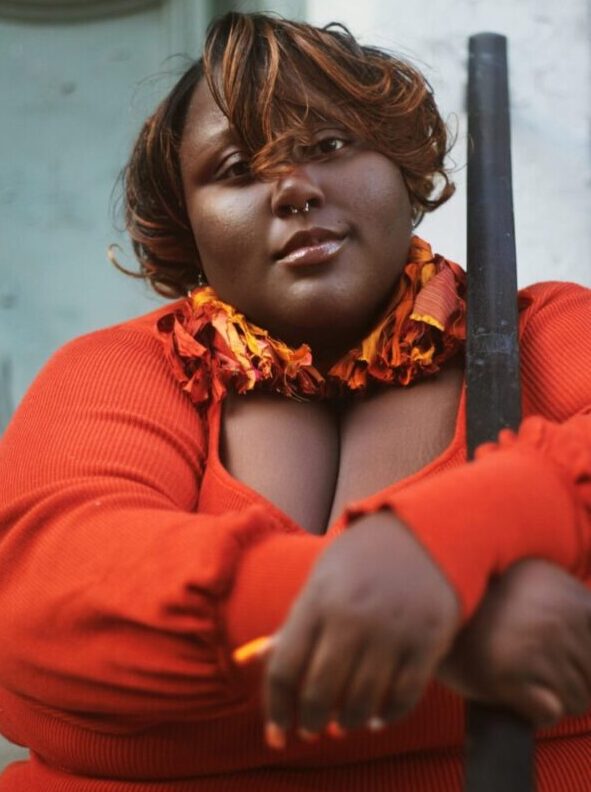If you’re looking for a break from pollen, Tulsa, Oklahoma may not be the best destination. However, if you seek genuine connections and have a healthy supply of allergy meds, then board the plane.
About a week ago, I arrived at Tulsa International Airport to explore a community ecosystem through the perspectives of local leaders whom I had yet to meet at Breakout. I had a hunch but was uncertain whether Tulsa would be as vibrant, innovative or resilient as my hometown, Baltimore, where most people reading this might currently reside.
Baltimore is nestled amidst waterways, Art Deco buildings and temples. It even features Neo-Baroque architecture, like our City Hall. In contrast, Tulsa is surrounded by fields and serene streets where traffic was almost nonexistent during my visit. A Tulsan explained to me that the city was originally designed for a larger population than it currently houses, hence its surprisingly low congestion levels. If you’ve never been, it also boasts a similar Art Deco vibe.
I was familiar with Breakout through its previous production about a close friend of mine, which was screened at such venues as Impact Hub Baltimore, the University of Baltimore and the now-defunct Parkway Theatre. People flocked to these screenings not only because my friend is famous, but also because of the strong sense of community. I was eager to become part of the energetic “Breakers” community, as Breakout affectionately refers to its participants.
First, some context: In May 2020, I received an unrestricted grant from the Breakout Foundation’s Frontline Support Fund. Both my local community in Baltimore and my extended online community nominated me as an inspiring changemaker. Instead of going through a lengthy application process or relying on personal connections, the funds from Breakout swiftly flowed based on trust. Unlike the usual scenario where I would have been left on the fringes without funding, Breakout bridged the gap and supported me as a Black, Queer mother and changemaker simply for being myself and helping my community. The funds directly reached me via Venmo, eliminating the need for a fiscal sponsor or formal non-profit status — a streamlined process without bureaucratic obstacles that is of utmost importance for Black founders and movement builders.
For this trip, Breakout staff asked me to serve as a captain. I must admit, I felt apprehensive about being a national captain and relied upon by individuals experiencing their first or second Breakout. However, I believe I did a commendable job alongside my Tulsa-raised co-captain.
Our journey began the morning after I arrived at Burning Cedar Wellness, situated on reclaimed land where a fire pit emanated mouthwatering aromas of food that Chef Nico Albert of the Cherokee Nation prepared for us. The self-taught chef guided us through an exploration of traditional Indigenous cuisines. Next, we visited one of the largest redevelopment sites in Tulsa, spearheaded by Black women, which I found to be incredibly inspiring.
Rather than visiting the museums and centers associated with the heavily debated 1921 Tulsa Race Massacre, we opted for a tour led by Chief Egunwale Amusan. Nobody disputes that it happened; it did. They (mostly Tulsans) instead debate how it happened. Chief proudly stated that he is the grandson of Raymond Beard Sr. and the grandnephew of Matthew and Mary Beard — all survivors of the 1921 Tulsa Race Massacre. He had us stand in certain spots along the Greenwood community and showed us pictures referencing where retailers, doctors and beauticians may have had their brick-and-mortar outposts. It was heavy but necessary to understand that this wasn’t just some angry mob, but something much bigger and more strategic — because historically people are just against seeing Black people win.
It is essential to recognize that tragedies and cities cannot be compared. Tulsa, like any other place, has its own unique story that I feel like I only just skimmed the surface of in my time there. Even this short column doesn’t do everything I learned justice. While pollen was beating my and most of my peers’ asses in the Midwest. I was happy to stand shoulder to shoulder with Breakers and expand my toolkit for how to better design and write about the Black history happening right now in our cities.
Before you go...
Please consider supporting Technical.ly to keep our independent journalism strong. Unlike most business-focused media outlets, we don’t have a paywall. Instead, we count on your personal and organizational support.
Join our growing Slack community
Join 5,000 tech professionals and entrepreneurs in our community Slack today!

Entrepreneurship is changing, and so is the economic development behind it

Tech Hubs’ new $210M funding leaves Baltimore and Philly off the table

Here’s what to know before using AI to craft your brand’s social media posts



